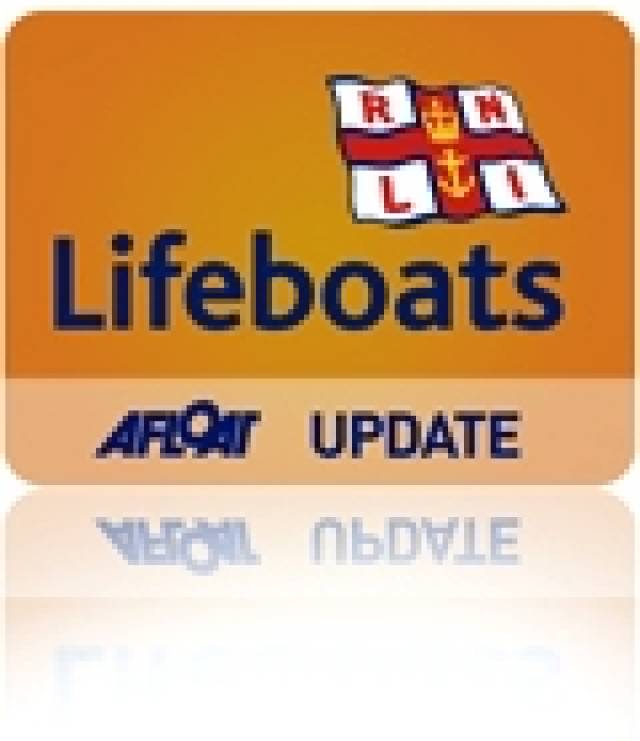#lifeboat – A call for assistance came for a second time yesterday to Baltimore lifeboat when the bleepers went off at 21:55, this time for the all weather lifeboat. The coastguard had issued a request for an immediate medical evacuation from Sherkin Island. In difficult weather conditions Coxswain Kieran Cotter, with mechanic Cathal Cottrell and crew Jerry Smith, Ronnie Carthy, Pat Collins, Brian Sweeney and Diarmuid Collins made their across Baltimore Harbour in driving heavy rain and high winds. They stood off Sherkin Island awaiting further instruction from the Coastguard. The medical issues were resolved and the Coastguard informed Baltimore Lifeboat that no further assistance was required. The RNLI Tamar class all weather lifeboat Alan Massey returned to her mooring at 23:00.
Earlier in the afternoon afternoon, with south easterly winds blowing force 7, gusting 8, Baltimore Inshore Lifeboat was launched to assist boats in Baltimore Harbour.
A yacht that broke clear of her mooring was driven across the harbour by the high winds and steep seas, until she went aground on rocks at Sherkin Island. Several local ribs went to the scene to try and tow the yacht to safety. After receiving several calls that the boats were struggling in big seas and strong onshore winds, the decision was quickly made that the lifeboat would launch to make sure that all involved were safe.
The yacht was being towed clear as the lifeboat arrived on scene, and the lifeboat escorted the boats back to Baltimore. A crewman was put aboard the yacht to assist in berthing her alongside the pier at Baltimore. The lifeboat was recovered from the water and made ready for service again by 1410hrs, the crew on the callout were Helm Youen Jacob, Tadhg Collins and Mícheál Cottrell.































































